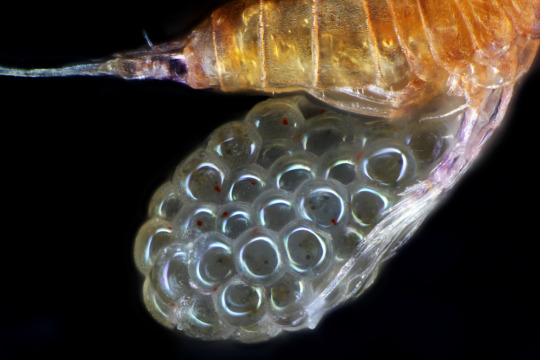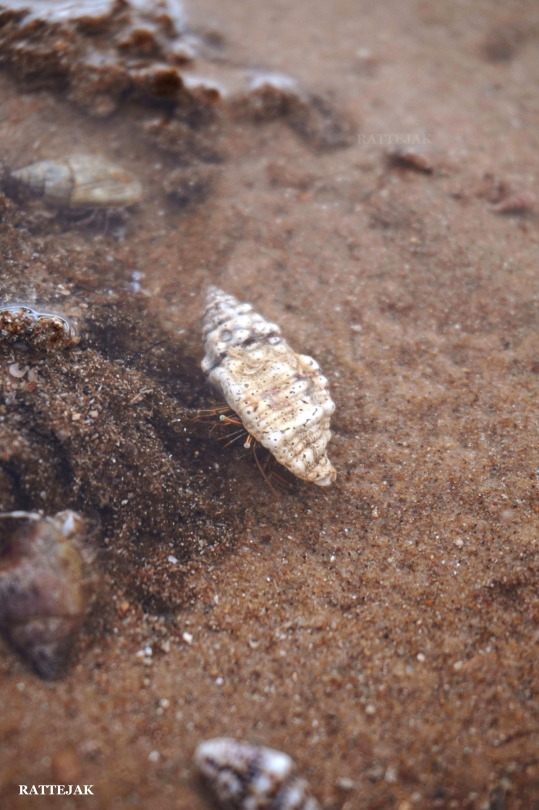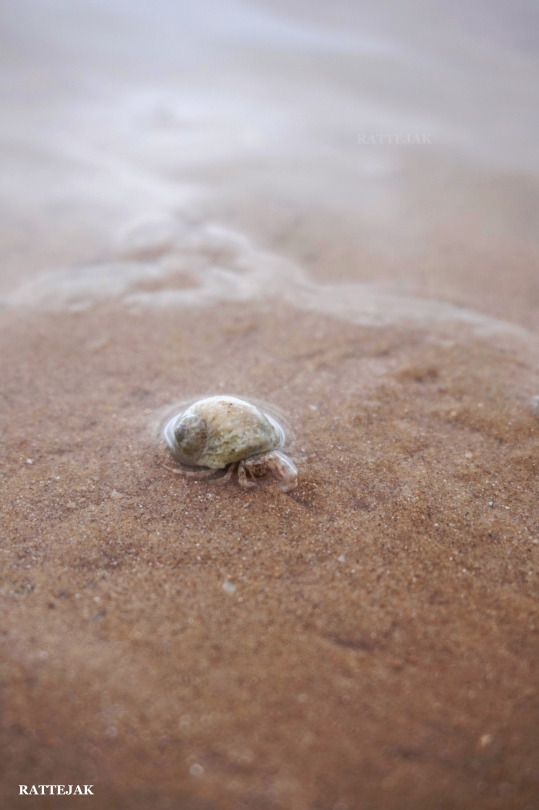#multicrustacea
Text

Copepod
“Copepods of various species. Photos were taken using a Biolam R-11 microscope. For photography, the dark field method was combined with polarization. Thanks to polarizing microscopy, the glow of muscle stripes in the bodies of some crustaceans is visible. Each photo is the result of panoramic shooting and focus stacking.” - via Wikimedia Commons (original description translated from Russian using Google Translate)
#wikipedia#wikipedia pictures#nature#animals#copepods#copepoda#crustacean#arthropoda#multicrustacea#arthropods#marine life#marine biology#marine animals#marine creatures#fish lice#crustaceans#sea animals#sea creatures#sea critters#ocean animals#oceancore#ocean aesthetic#ocean creatures#ocean critters#zoology
27 notes
·
View notes
Photo


Simple little isopod friend
Cubaris nigroflava
19/07/22
#Cubaris nigroflava#Black-and-yellow Spheric Pill Woodlouse#Cubaris#Reclined Pill Woodlice#Armadillidae#Tropical Pill Woodlice#Crinocheta#Holoverticata#woodlice#woodlouse#Oniscidea#Isopoda#isopods#Peracarida#Eumalacostraca#Malacostraca#Multicrustacea#Typical Crustaceans#Crustacea#Crustaceans#bugs#bugs tw#bugblr#bug#insects#insectblr#insect#insects tw#entomology#Arthropods
46 notes
·
View notes
Photo

Yellow line arrow crab (Stenorhynchus seticornis)
Photo by jonmcclintock
#yellow line arrow crab#arrow crab#stenorhynchus seticornis#stenorhynchus#stenorhynchinae#inachoididae#majoidea#brachyura#pleocyemata#decapoda#eucarida#eumalacostraca#malacostraca#multicrustacea#crustacea#pancrustacea#arthropoda#panarthropoda#ecdysozoa
24 notes
·
View notes
Photo

Chuyu
Kingdom: Animalia
Phylum: Chordata
Class: Arthropoda
Subphylum: Crustacea
Superclass: Multicrustacea
Class: Malacostraca
Subclass: Eumalacostraca
Superorder: Eucarida
Order: Xenocarida
Family: Chimerarthropodidae
Genus: Chimeroarthropus
Species: C. domesticus (”domesticated chimerical jointed-foot”)
Information: with a name that means “snatcher” in the Chelonian language, it is easy to see why these creatures were domesticated by them. The Chuyu is a golden retriever-sized crustacean that can breath both in and out of water. Uniquely for a crustacean, it possesses tentacles for grabbing onto prey, as well as a pair of mandibles for chewing on prey. The armor of the Chuyu is tan in color, which allowed its wild ancestors to blend in on the sandy beaches and sea floors of Sortoon. After being exported off world, the Chelonians domesticated the Chuyu, and they currently breed them for both meat and for helping in raids, since the Chuyu is naturally attracted to shiny objects. The Chuyu is, as stated earlier, a carnivore, and primarily feeds on small animals and other marine life. At the end of their tail, they possess two cerci and a long terminal filament like a silverfish. The feathery antennae on its head are incredibly sensitive, and allow it to detect even minor differences in scent, which also makes it a good “bloodhound” of sorts.
13 notes
·
View notes
Text

Copepod
#copepod#copepoda#egg sac#wikipedia#wikipedia pictures#nature#animals#marine life#marine biology#marine animals#sea creatures#sea critters#fish lice#arthropods#crustacean#arthropoda#multicrustacea#oceancore#ocean aesthetic#ocean life#ocean animals#ocean#zoology
20 notes
·
View notes
Photo




Barnacles at home on a Mangrove tree
many people don’t seem to realize that barnacles are a kind of crustacean. Well, you do now.
Why they’ve called a Mangrove tree home, is because they simply look for any sturdy surface to latch onto. Permanently. That’s why they’re often found on man-made structures.
Unidentified, Family Chthamalidae
15/06/22
#Chthamalidae#Barnacles#Chthamaloidea#Balanomorpha#Thoracicalcarea#Thoracica#Normal Barnacles#Cirripedia#Thecostraca#Hexanauplia#Multicrustacea#Crustacea#crustaceans#tidepooling#outside entomology
31 notes
·
View notes
Photo


Volcano Barnacles
Towering monoliths of the tidepools,
though only a few centimetres tall.
Tetraclita squamosa, “Green Volcano Barnacle”
15/06/22
#Tetraclita squamosa#Green Volcano Barnacle#Tetraclita#barnacles#Tetraclitidae#Coronuloidea#Balanomorpha#Symmetrical Sessile Barnacles#Thoracicalcarea#Thoracica#Cirripedia#Crustacea#Crustaceans#Multicrustacea#Hexanauplia#Thecostraca
27 notes
·
View notes
Photo


Hiding
Unidentified, family Armadillidae
19/07/22
#Unidentified#Armadillidae#Tropical Pill Woodlice#woodlouse#woodlice#Crinocheta#Holoverticata#Oniscidea#Isopoda#isopods#Peracarida#Eumalacostraca#Malacostraca#Malacostracans#Multicrustacea#Typical Crustaceans#Crustacea#Crustaceans#camouflage#bugs#bugblr#bugs tw#insects#insect#insectblr#insects tw#entomology#invertblr#invertebrates#Arthropods
19 notes
·
View notes
Photo


Peekaboo!
Unidentified, family Armadillidae
21/12/22
#Armadillidae#Unidentified#Tropical Pill Woodlice#Crinocheta#Holoverticata#woodlouse#woodlice#Oniscidea#Isopoda#Isopods#Peracarida#Eumalacostraca#Malacostraca#Malacostracans#Multicrustacea#Typical Crustaceans#Crustacea#Crustaceans#Arthropods#Arthropoda#bugs#bug#bugs tw#bugblr#insectblr#insects#insects tw#entomology#invertblr#invertebrates
7 notes
·
View notes
Photo


Lovely pink day at the beach ♥
Paguroidea species
22/08/21
#Paguroidea#Anomura#Pleocyemata#Decapoda#Eucarida#Eumalacostraca#Malacostraca#Multicrustacea#Crustacea#crustaceans#crabs#hermit crabs#beach#beach aesthetic#aesthetics#Aesthetic#ocean#sea#sea aesthetic#ocean aesthetic#photography#amateur photography#tidepooling#arthropoda#arthropods
11 notes
·
View notes
Photo

Last pink beach photo, this one’s a little more melancholy.
Paguroidea species
22/08/21
#Paguroidea#Anomura#Pleocyemata#Decapoda#Eucarida#Eumalacostraca#Malacostraca#Multicrustacea#crustaceans#Crustacea#crabs#crab#hermit crabs#unidentified#sea#sea creatures#sea life#ocean#marine biology#marine life#tidepooling#ocean aesthetic#Aesthetic#aesthetics#photography#amateur photography#arthropoda#arthropods
7 notes
·
View notes
Photo

Prawn (Lucifer typus)
Photo by Russ Hopcroft
#prawn#lucifer typus#lucifer#luciferidae#sergestoidea#dendrobranchiata#decapoda#eucarida#eumalacostraca#malacostraca#multicrustacea#crustacea#pancrustacea#arthropoda#panarthropoda#ecdysozoa
162 notes
·
View notes
Photo

Sally Lightfoot crab (Grapsus grapsus)
Photo by Dave Irving
#sally lightfoot crab#grapsus grapsus#grapsus#grapsinae#grapsidae#grapsoidea#thoracotremata#eubrachyura#brachyura#pleocyemata#decapoda#eucarida#eumalacostraca#malacostraca#multicrustacea#crustacea#pancrustacea#arthropoda#panarthropoda#ecdysozoa
30 notes
·
View notes
Photo

California spiny lobster (Panulirus interruptus)
Photo by David R. Andrew
#california spiny lobster#spiny lobster#panulirus interruptus#panulirus#palinuridae#achelata#pleocyemata#decapoda#eucarida#eumalacostraca#malacostraca#multicrustacea#crustacea#pancrustacea#arthropoda#panarthropoda#ecdysozoa
41 notes
·
View notes
Photo

Cleaner shrimp (Ancylomenes holthuisi)
Photo by Joi Ito
#crinoid shrimp#cleaner shrimp#ancylomenes holthuisi#ancylomenes#pontoniinae#palaemonidae#palaemonoidea#caridea#pleocyemata#decapoda#eucarida#eumalacostraca#malacostraca#multicrustacea#crustacea#pancrustacea#arthropoda#panarthropoda#ecdysozoa
23 notes
·
View notes
Photo

Tufted ghost crab (Ocypode cursor)
Photo by Fabrice Stoger
#id'ing#tufted ghost crab#ghost crab#ocypode cursor#ocypode#ocypodinae#ocypodidae#ocypodoidea#thoracotremata#eubrachyura#brachyura#pleocyemata#decapoda#eucarida#eumalacostraca#malacostraca#multicrustacea#crustacea#pancrustacea#arthropoda#panarthropoda#ecdysozoa
59 notes
·
View notes